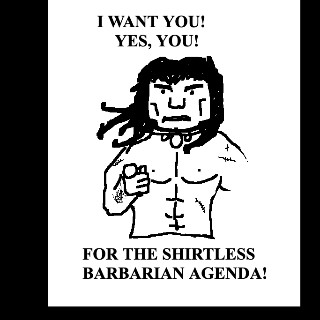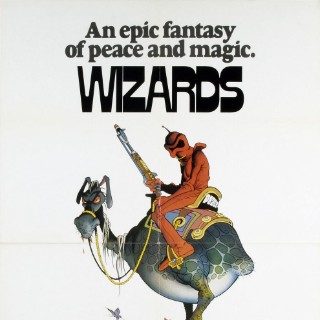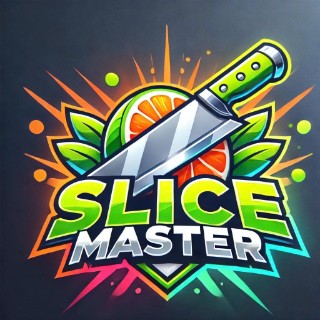Not all references are created equal. Help your peers. Throw your book reviews here! (Or post a link.)
Reference Book Review Thread
-
-
I'll start with a review of Osprey's "French French Soldier Versus German Soldier, Verdun 1916" by David Campbell.

I want to highlight this book as it seems particularly relevant to WGA fans, covering the forces of TWO of WGA's kits. Additionally, until 28 February 2022 it's marked down from $22.00 to $6.60. That's a heck of a deal.

https://ospreypublishing.com/french-soldier-vs-german-soldier
It's one of Osprey's Combat series so it follows the same basic layout they all do.
Which is basically:
INTRODUCTION
(Which includes strategic overview)
OPPOSING SIDES
- Origins
- Recruitment and Training
- Morale and logistics
- Tactics and weapons
- Communications
- Leadership
3 X BATTLES/OPERATIONS/FIGHTS
ANALYSIS
AFTERMATH
UNIT ORGANIZATIONS
BIBLIOGRAPHY
INDEX
This volume does a good job of setting the stage by briefly describing the events of 1914 and 1915 that lead to gridlock and death of maneuver in 1916. The strategic overview leading to Verdun is interesting. The Germans evidently viewed the British as the more capable and intractable foe. Consequently they decided to target the French as the weaker opponent who might be knocked out of the war with a big enough blow. The Germans decided the best approach was to bleed the French dry with an Ermattungsstrategie (strategy of attrition). Considering the Allies probably outnumbered the Central Powers two to one that may have not been the best approach. However, the Germans planned to leverage their newly developed tactics (Stoßtruppen) to minimize casualties and let their two to one local advantage in artillery inflict the crippling casualties. The Germans targeted Verdun as it protruded into their lines, they had good supply lines to it, and it was an objective French national pride would not let them abandon... hence the lure for the German trap.
The section on Morale mentioned that relationships between the Prussians, Bavarians, Saxons, and Württembergers could be strained. Easy to forget that Germany was far less unified at the turn of the last century.
The Tactics and Weapons section is of course interesting. One example is that Chauchats were first fielded in 1916 with one per platoon. As maligned as the Chauchats were, having a one man portable, mobile, automatic weapon available when the bolt action rifle is the norm is a big step forward/combat multiplier.
The three actions where the combat between French and German Soldiers is described are Boise Des Cauers, Mort Homme, Fort Vaux.
As per all the Osprey Combats there are nice color paintings representative of the two combatants.


Want to know what that pouch is on your miniature? Now you know.
The Osprey Combat series also includes one or two point of view battle paintings per book.


The actions are all accompanied by good maps.

The volume is illustrated throughout with clear and illustrative photographs.

The Analysis/Aftermath is this: Despite initial impressive gains the Germans got caught in a true grinding battle of attrition. The German artillery was not as effective as hoped. The French suffered 379,000 casualties, the Germans 336,000 to 434,000. A huge German loss considering the before mentioned two to one manpower advantage of the Allies.
In conclusion this book is clear, concise, and engaging. One of the better Osprey Combats. 5 of 5. Buy now.
-
I'm going to copy my review from the other thread. ThenI'll work on other reviews.
I recommend Ancient Armies of the Near East as well as Aztecs, Zapotec and Mixtecs for WGA customers looking to get excited about upcoming products; both are informative, give hints of a larger body of history to explore, and have great artwork. I also enjoyed the book on the Sea People and the book on Qadesh. Despite great color plates and plate commentary, New Kingdom Egypt and Ancient Assyrians both felt a bit more like history overviews with some Osprey content, not going into quite the depth I was hoping for (even in a 64 page book) on weapons, equipment and tactics. Hittite Soldier and Soldier of the Pharaoh are both books I think I might finish someday, despite some truly uninspiring art.
-
@BS Kitbasher
Good stuff! Thank You.
Reference:

Maybe there just isn't much one can write about such truly ancient tactics that isn't pure conjecture? There just isn't much to go on. Heck, there's still debate about how the push of pike worked and that was fairly well documented "recent" history.
-
Officers and Soldiers of the French Army 1940 by André Jouineau.

This book is pretty much 62 pages of plates covering:

I have mixed thoughts on this one.
Some plates are very useful. Particularly the squad and crew served weapons organization ones:


Other plates are largely bereft of context and any detail.

What is this unit? Even very briefly. What did they do in 1940? Again, even very briefly. What was their size and table of organization and equipment? You can glean some information from the small captions, but not enough.
Probably 2 of 5 stars. Buy only if the French Army of 1940 is of particular interest to you.
-
@BS Kitbasher

Thanks for this! Picked up "Rome and Her Enemies."

"Rome and Her Enemies" edited by Jane Penrose covers (surprisingly) Roman armies and their enemies across 304 nicely illustrated pages.
Contents:

This book reuses/compiles material and pictures from various Osprey publications.

The book doesn't dive into deep details but it highlights the history and changes in the Roman War Machine.

Different Roman enemies and their methods of making war are also highlighted.

Of particular interest to WGA fans the last section of the book covers Late Empire and Goths.


Good maps and timelines aid understanding:

This book is a bargain at MSRP, but can be found for very cheap used online.

Recommended. (Unless you already own most of the Osprey books the material is drawn from).
Sidenote: I feel like this book is let down by the cover. Work on the cover art guys ;)
-
"Panzergrenadier Versus US Armored Infantryman - European Theater of Operations 1944" by Steven J. Zaloga.

This is another book in the Osprey "Combat" series so follows the same format as covered in "French Soldier Versus German Soldier - Verdun 1916."
Zaloga is a well known author for those with an interest in armor and this book is written with authority.
WGA fans will be most interested in this book as it spends some time discussing the Panzer Lehr Divison fighting in Normandy.
The contents:

As usual three seperate actions are described and evaluated.
The volume has nice, illustrative photos and maps that help to lend understanding to the text:


As usual there is a "split" battle painting:

And a two page battle scene painting:

There is also the plates showing the combatants and their equipment. What is that thing dangling off my Panzer Lehr miniature? Now you know.


Recommended. Decent, in print references that cover the Panzer Lehr Division are hard to find.
-
@JTam
Mmm the Groupes Francs also known as Corps-Francs or simply Corps Francs -not related at all with post WWI German Freikrops- are quite an interesting point of the French Military.
Les Groupes Francs were part of the French military organization since the Hundred Years' War; armies of french, italian or swiss mercenaries under the name of Grandes Compagnies or Libres Compagnies -so Free Companies.
At the beginning of the French Revolutionary Wars, many Free Corps were created in France under different names: legion, volunteers, like the American Legion of the Chevalier de Saint-George or among the royalists like the Legion of Damascus.
On January 8, 1814, Napoleon the First issued a decree on the formation of the Corps Francs for the territorial defense:
« Les corps francs s'armeront, s'équiperont et se monteront à leur frais. Ils ne recevront aucune solde ni de guerre ni de paix. »
“Free Corps will arm themselves, equip themselves and mount themselves at their own expense. They will receive no war or peace pay"
They were dissolved by order of Louis XVIII on April 15, 1814. Recreated by Napoleon on April 22, 1815, they were again dissolved by Louis XVIII on July 20, 1815.
After the defeat, in August and September 1870, the Corps Francs are the third and last incarnation of the improvised forces at the time of the war, which absorbed in Paris as in the provinces, a considerable workforce.
Many free corps were created, both by French department (Skirmishers of the Seine) and free corps of foreign volunteers (Franco-American franc-tireurs, French franc-tireurs de Montevideo, legion of volunteers from the West made up of pontifical Zouaves led by Athanase de Charette de La Contrie, Franche-Comté skirmishers from Garibaldi, Egyptian hunters) commanded by personalities such as the Pole Jozef Bossak-Hauké or Garibaldi who enlisted with his sons Menotti and Ricciotti.
According to the decrees of September 29 and October 11, 1870 relating to the organization of companies of national guards one counted nearly 600 formations.
During WWI, the free corps (or free companies) were units of volunteers often set up within a brigade for a particular attack -read suicide mission like mounting the attack of a German trench- with a volunteer officer. They enjoyed certain advantages: no guards, no chores, etc. The group was made up of several free companies.
Even if both units were used to share the same kind of fighting tactics, strategies and armament WWI Free Corps should not be mistaken with WWI Trench Cleaning Units -as depicted in 1996 Bertrand Tavernier's Capitaine Conan- whom main mission was the complete incapacitation of any enemies remaining in the trenches behind the progress of the assault troops. Very important since it do consist in ensuring that no enemies are left behind, the trench clearing mission has given rise to a whole series of bloody stories or myths more or less in line with reality. Units were specialized in these operations which were carried out with handguns, grenades or more rarely with knives.
The German response to the French Corps Franc will be the Strumtruppen.
From October 1939, Corps-Francs were formed by the French army to carry out an guerilla war in front of the Maginot line. They have against them their German counterparts charged to protect the Siegfried Line.
During the Battle of France, in May 1940, Motorized French Franc cavalry groups were set up. At the end of June 1940, General Jaques Pagézy (sl) created the Groupe Franc Blindé Ziégler in the North West of Saint-Étienne.
Units of Corps Francs d'Afrique, fighters of Free France were formed in Morocco (then a French protectorate) in 1942, following the Allied landings in North Africa. Answering back to the call of General De Gaulle and composed of Moroccan volunteers of various origins and religions (Jews, Muslims, Christians), they fought Rommel and the Afrika Korps in Tunisia within the 5th US Army, with English equipment. They participated in the capture of Bizerte (1943).
Integrated into the 2nd D.B of General Leclerc, they were then positioned in England in order to participate in the landing in Normandy. Their history merges with that of the 2nd DB from that point.
More informations in english about WWI and early WWII Corps Francs:
http://dunkirk1940.org/index.php?&p=1_133
More informations in French about French Resistance Corps Francs
https://blogs.univ-jfc.fr/vphn/histoire-locale/le-corps-franc-pommies-la-resistance-de-larmee-2020/
http://grca.free.fr/soldat_fran%C3%A7ais_en_40/tenues_patrouilles_corpsfrancs_40.htm

That document about the creation of the CFL -or Corps Franc de la Liberation, Liberation Free Corps- whose objective was to «provide the Resistance with a true, military division.» But those forming the CFL were faced with two problems:
-the doctrine
-the organization.
The Doctrine:
The author of the report («Fouché») stated that «one of the Resistance's greatest weaknesses is its lack of a doctrine that outlines its military strategy. A large part of the groupes does not understand, or simply does not care, that the essential objective is: FIGHT THE WAR.» The strategy was to «fight and attack the enemy everywhere.» Guerilla warfare was necessary, and very efficient because of its mobility and its element of surprise.
On the other hand, it was imperative that the resistance fighters did not become estranged and isolated from the general population. Propaganda, in this regard, was essential: «The people of France must understand that the Resistance fighters’ actions are nothing like the atrocities committed by the assassins in the Milice, or others on the German's side...Demonstrate that the Resistance carries out acts of war not «terrorist acts.»
The Organization:
In order to be more efficient, the CFL would become the single command for the Resistance movement: «The point is not to bring in a new administration to superimpose its power over those that already exist. The CFL will simply organize the pre-existing groups under one entity and under one doctrine. These groups would include the CF, AS, AO, Maquis, Fer, effectively getting rid of the vertical chain of command. The same would be true for the regional groups who would be led by the EM Action (Etat-Major Action). The CFL and the FFI would remain independent. The CFL are the combat groups of the MLN...the FFI is the fusion of the national, regional, and departmental sectors, as well as the EM, paramilitary groups, the FTP, and ORA...»
The author of this report also outlines several, basic principles in order to guide the CFL's goals and strategies:
-the subordination of the military to the civilian is absolutely necessary: each military leader must understand that they have to verify their actions with the civilian authorities first. It is stated that «this principal is upheld in ALGIERS by the CFLN and can not ever in any case be questioned.»
-leaders will be chosen on merit: «Each leader will be judged on his own merit and character, not by his social class or rank.»
Lastly, the author describes the organization for the CFL's different echelons in detail, both national and regional.
In summary, «Fouché» writes at the end of the document essentially that it's better to have something than nothing: «the regional and departmental leaders» in the CFL are qualified to organize and command the maquis in their regions. However, they still need to have a clear objective: «ARM THE MAQUIS—TRAIN THE MEN FOR COMBAT—CARRY OUT THE RESISTANCE ARMY'S MISSION.»The very nature of WWII CFL do imply quite a mish-mash regarding their uniformoly. Each Maquis used what they could scavenge from regular army warehouses and Jouineau is only depicting some of the best examples available to him thanks to his sources.
-
@Steven StGeorges
Damn Brother, you just educated me. Thank You!
-
@JTam
Always a pleasure my friend, I know that most of times pertinent informations can be quite hard to dig out when sources are only in French (or any foreign language) and Googling "Free Corps" is always (mis)leading to German Freikorps.😅
Another funny fact (and quite a bad habit when reading French stuff like Jouineau's for instance): the reader must refer to (so read) the most relevant books in the bibliography... just another of our cultural traits: arousing intellectual curiosity. 🧐
-
@Steven StGeorges
Thank You Again. As you said, not a lot of English language source material and not something easy to Google either.
I found the WW1 "Forlorn Hope" type version of the Free Corps particularly interesting.
I also went down a Google rabbit hole on the Trench Clearing Units/CPT Conan.
-
@JTam
Capitaine Conan is the second WWI Bertrand Tavernier ever directed, the first was La Vie est rien d'autre (1989), more a post-war with the story of the Unknown Soldier as a background. Another movie was planned -according to rumours about early war- but the death of Tavernier in 2021 did put an end to the project of a complete trilogy.
-
@JTam
And forgot to post YT links to Corps Francs stuff -sorry in French.
https://www.youtube.com/watch?v=hpFaBp7D9HE
Another one, more interested in the weapons Corps Francs used during their Trench Cleansing.
https://www.youtube.com/watch?v=BIetRR8z400
A video regarding a coupe-coupe or machete used by a member of some unknown Corps Franc unit.
https://www.youtube.com/watch?v=EqW5cjqhQ8I
(an almost 1kg -940grammes- hand weapon)
-
@Steven StGeorges
Good stuff! Thank You. That's a vicious chopper in the last video.











